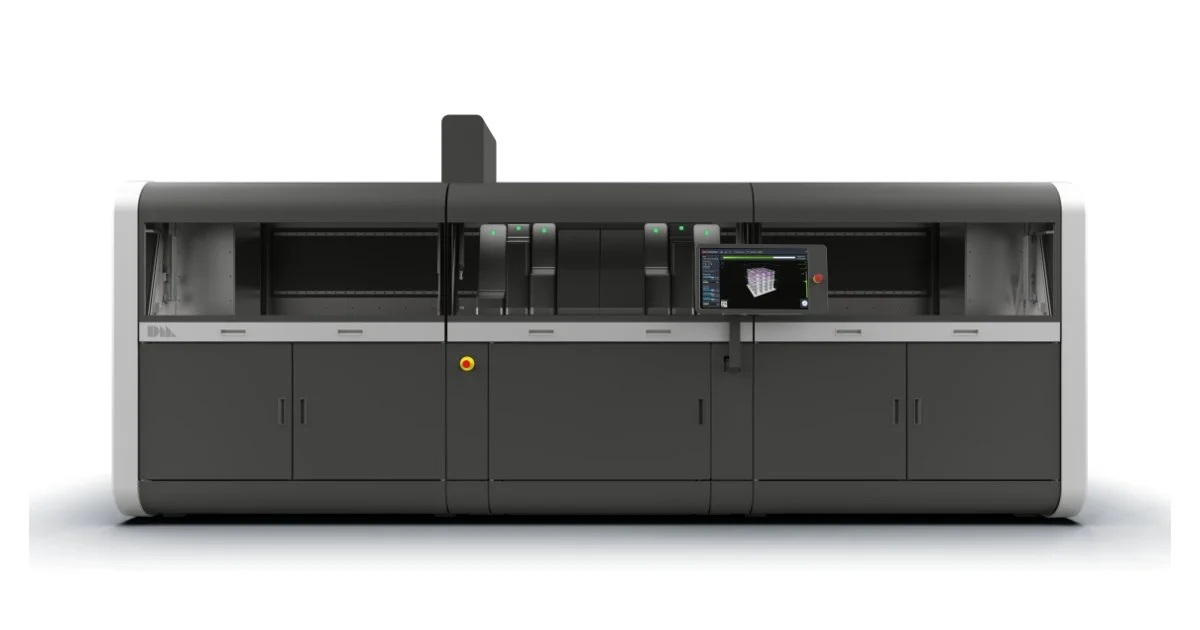Desktop Metal Awarded Million Dollar Project from DoD to Develop Additive Manufacturing Process Producing Cobalt-Free hardmetals
Desktop Metal | October 08, 2020

Desktop Metal, a pioneer in large scale manufacturing and turnkey added substance fabricating arrangements, declared today it has been granted Phase I of a long term $2.45 million dollar venture from Department of Defense to build up an advanced Additive Manufacturing measure fit for mass creating without cobalt hardmetals, created by the U.S. Armed force. The organization's Production System™ with Single Pass Jetting , a restrictive AM innovation created by Desktop Metal, will mass assembling complex molded sans co hardmetal parts without tooling and is relied upon to prompt the improvement of a double use innovation with various applications in DoD just as in the regular citizen segment.
This new cycle can possibly change the scene of the carbide hardmetals market which is extended to develop to $24 billion by 2024 and is utilized in double use applications including cutting apparatuses, scraped area and compound safe spouts, parts for the oil and gas division, parts for the substance and material industry, devices utilized in agribusiness and mining, steel industry, purchaser products and outdoor supplies, parts for rough terrain transportation, aviation and safeguard segment, development, and in instruments and kicks the bucket for chip-less materials framing.
The venture is given to Desktop Metal by the U.S. Armed force Contracting Command – Aberdeen, Research Triangle Park, in the interest of U.S. Armed force Research Laboratory to the National Center for Manufacturing Sciences (NCMS) Advanced Manufacturing, Materials and Processes (AMMP) Consortium.
Effective examinations by the U.S. Armed force in building up a novel iron-based nano material as the grid in WC-based hardmetals, supplanting Cobalt, has brought about the advancement of a licensed, novel sans co WC-(Fe-Ni-Zr)- based hardmetals. Pair with the making of this promising new material for business and DoD applications, the ARL has been looking for a practical, high volume measure fit for assembling the new sans co hardmetals into unpredictable, net or close net formed parts without the utilization of any tooling.
Among the goals and requirements of the three-year project include:
Development of a feedstock and binder system for novel cobalt-free hardmetal;
Using the Desktop Metal SPJ process to print a sufficient quantity of components of at least 200,000 parts in one day from a single machine; and
Delivery of a cost analysis for scaling up its advanced SPJ binder jet manufacturing technique to successfully manufacture at least 500,000 prototype pieces.
“The novel Co-free hardmetal grade is expected to yield a high strength, high toughness, high hardness, and high wear resistance material,” said Dr. Nicholas Ku, Materials Engineer, CCDC Army Research Laboratory. “We believe combining this novel material with Desktop Metal’s Single Pass Jetting technology will have major applications not only in the defense sector but also in the commercial sector. Further, we believe this combined method will dramatically improve sustainability, reduce the use of a conflict mineral and provide an environmentally-friendly process to mass produce parts with superior properties.”
Desktop Metal Production System
Made by driving creators of fastener flying and single-pass inkjet innovation, the Desktop Metal Production System is intended to be the quickest method to 3D print metal parts at-scale. The Production System use patent-forthcoming SPJ innovation to accomplish print accelerates to multiple times those of inheritance powder bed combination added substance fabricating advances and convey up to several thousands or even huge number of parts every year at costs serious with traditional assembling. Though regular cover flying uses various carriages and ignores a form box to finish the means needed to print each layer, bi-directional SPJ on the Production System combines these means into the movement of a solitary print carriage, significantly decreasing print time and eliminating squandered movements during printing to increment mechanical productivity.
Dr. Animesh Bose, Vice President of Special Projects for Desktop Metal, and a Fellow of ASM International and APMI International, will fill in as head agent of the three-year venture. With over 40 years of involvement with the preparing of particulate materials, he is the writer of more than 125 distributions in the zone of P/M handling of cutting edge materials, wrote and co-created four books, and innovator or co-creator of more than 12 licenses.
“The success in this project will not only provide the hardmetal community with their eagerly desired Co-free hardmetal solution, but also result in the development of a tool-free processing technique capable of fabricating this class of materials into extremely complex shaped parts at speeds that can rival most other high-volume manufacturing techniques, opening up new horizons in the area of hardmetals and its applications,” said Dr. Bose.
“This effort exemplifies the ability of NCMS and AMMP to link cutting edge technologies of non-traditional defense contractors with government agencies to meet existing needs and requirements,” said NCMS’ CEO Lisa Strama. “We look forward to the lasting impact this initiative will have within AMMP, the Army, and the broader community driving innovative Co-free hardmetal solutions across the services and industry at large.”
About Desktop Metal
Desktop Metal, Inc., based in Burlington, Massachusetts, is accelerating the transformation of manufacturing with an expansive portfolio of 3D printing solutions, from rapid prototyping to mass production. Founded in 2015 by leaders in advanced manufacturing, metallurgy, and robotics, the company is addressing the unmet challenges of speed, cost, and quality to make Additive Manufacturing an essential tool for engineers and manufacturers around the world. Desktop Metal was selected as one of the world’s 30 most promising Technology Pioneers by the World Economic Forum and named to MIT Technology Review’s list of 50 Smartest Companies.